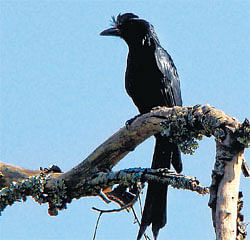
The Forest Department is all set to conduct a bird census in the Biligiriranganathaswamy Tiger (BRT) Reserve forest in November, after a gap of 15 years.
The Biligiriranganabetta is a unique hill where the Eastern and Western Ghats meet. It is home to more than 1,000 varieties of plants. Twenty-four varieties of mammals, 22 varieties of reptiles, 11 species of bipeds and 145 species of butterflies are found in the forest. So far, 274 varieties of birds have been identified in the reserve forests. Among them, 18 are on the verge of extinction. Ornithologists from Bangalore, M B Krishna and S Subramanya, had conducted a bird census in the reserve forest in 1997. In subsequent years, several ornithologists conducted studies at Biligiriranganabetta. But census was never undertaken again.
The census will identify avians which are on the verge of extinction and help take steps to protect them. The BRT Reserve forest is spread over an area of 574.82 square kilometre. It was declared a reserve forest in 1974. Last year, the reserve forest was included in Project Tiger and more than 30 tigers are said to be have been found there.
The reserve forest is spread over Chamarajanagar, Kollegal and Yelandur taluks. It is home to the Gundal and Suvarnavathi reservoirs. During winter, a variety of birds visit the forest and nest around the reservoirs. The migratory birds from North India visit in large numbers.
Red-vented bulbul, cuckoo, green pigeons, spotted doves, blue jays (Indian Roller), peacocks, tree pies, plum-headed parakeets, crow peasants (coucal), minivets, bee-eaters, mynas, kingfishers, racquet-tailed drongos, blue birds, woodpeckers, water birds, are most commonly found here. The Forest department is planning to conduct the census with the help of ornithologists who had previously conducted studies in the BRT Reserve forest, amateur bird observers and voluntary organisations. The census will be conducted based on the transect methodology and focus will be on the density of birds. “There is a need to conduct the census more scientifically. Only then can measures be taken to protect the birds which are on the verge of extinction. Preparations are on for the exercise and suitable training will be given to the enumerators,” said Vijay Mohan Raj, Forest Conservator and Director of BRT Tiger Project.